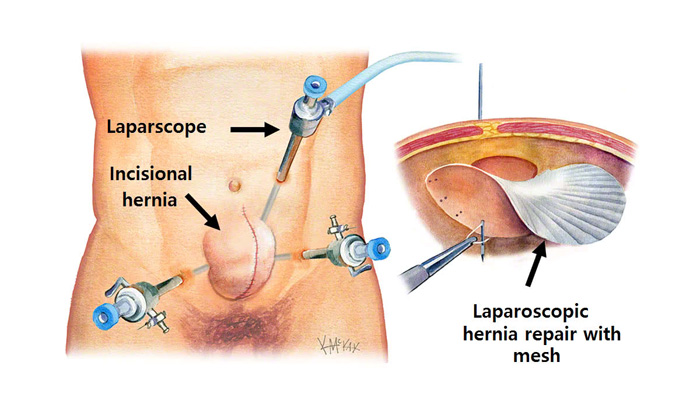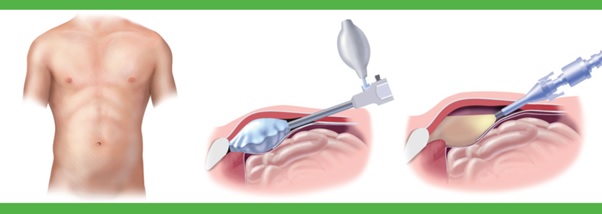What is a hernia?
A hernia occurs when an internal organ or other body part protrudes through the wall of muscle or tissue that normally contains it. Most hernias occur within the abdominal cavity, between the chest The most common forms of hernia are:
- Inguinal hernia: In men, the inguinal canal is a passageway for the spermatic cord and blood vessels leading to the testicles. In women, the inguinal canal contains the round ligament that gives support for the womb. In an inguinal hernia, fatty tissue or a part of the intestine pokes into the groin at the top of the inner thigh. This is the most common type of hernia and affects men more often than women.
- Femoral hernia: Fatty tissue or part of the intestine protrudes into the groin at the top of the inner thigh. Femoral hernias are much less common than inguinal hernias and mainly affect older women.

- Umbilical hernia: Fatty tissue or part of the intestine pushes through the abdomen near the navel (belly button).
- Hiatal (hiatus) hernia: Part of the stomach pushes up into the chest cavity through an opening in the diaphragm (the horizontal sheet of muscle that separates the chest from the abdomen).
Other types of hernias include:
- Incisional hernia: Tissue protrudes through the site of an abdominal scar from a remote abdominal or pelvic operation.
- Epigastric hernia: Fatty tissue protrudes through the abdominal area between the navel and lower part of the sternum (breastbone).
- Spigelian hernia: The intestine pushes through the abdomen at the side of the abdominal muscle, below the navel.
- Diaphragmatic hernia: Organs in the abdomen move into the chest through an opening in the diaphragm.
WHAT ARE THE ADVANTAGES OF LAPAROSCOPIC INGUINAL HERNIA REPAIR?
Laparoscopic Hernia Repair is a technique to fix tears in the abdominal wall (muscle) using small incisions, telescopes, and a patch (mesh). The laparoscopic repair offers a shorter return to work and normal activity for most patients.

As noted, the laparoscopic approach usually results in
- less pain
- earlier return to normal activities and earlier return to work than the open
- Less scarring
- Major complex hernias can be repaired by laparoscopy.
Other types of hernias include:
Tissue protrudes through the site of an abdominal scar from a remote abdominal or pelvic operation.
Fatty tissue protrudes through the abdominal area between the navel and lower part of the sternum (breastbone).
The intestine pushes through the abdomen at the side of the abdominal muscle, below the navel.
Organs in the abdomen move into the chest through an opening in the diaphragm.
